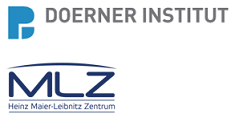Speaker
Description
The literary sword, representing a typical ideal pursuit for the Chinese study culture, is a vital writing tool for bamboo and wooden slip modifications in ancient China. Casting in bronze in the early stage followed by iron materials, its utilization can be traced back to Shang Dynasty and was extremely popular with many officials and literati in the Han Dynasty. This western Han iron artifact was unearthed from the Han tomb in Huchang, Hanjiang (about seven kilometers away from the western suburbs of Yangzhou, Jiangsu province). Based on the efficient time-of-flight (TOF) method, neutron tomography and diffraction experiments were conducted at the energy-resolved neutron imaging instrument (ERNI) at China Spallation Neutron Source (CSNS), which could provide higher neutron flux by using coupled hydrogen moderator.
In light of the advantage of in-situ intense penetration into metals and superior sensitivity for light elements and their isotopes, the neutron tomography showed the entire structure (3D) of the sword a wedge-shaped appearance, complementing the X-ray CT results. In addition, more organics could be revealed. Specific 2D slices gave the intuitive preservation status and manufacturing process, such as traditional bodiless wood and bandage crack defects. Meanwhile, in combination with macro-X-ray fluorescence (XRF) resulting in the iron as the main element, neutron diffraction data exhibited the ferrite as the main phase while the goethite as the primary corrosion product which correspondingly displayed high contrasts in neutron tomography due to the hydrogen.
This case shows that neutron scattering is an essential way for archaeological iron-based artifact research. Through the instrumentality of CSNS, more scientific analyses will be conducted in cultural heritage and archaeometallurgy in our future work.

